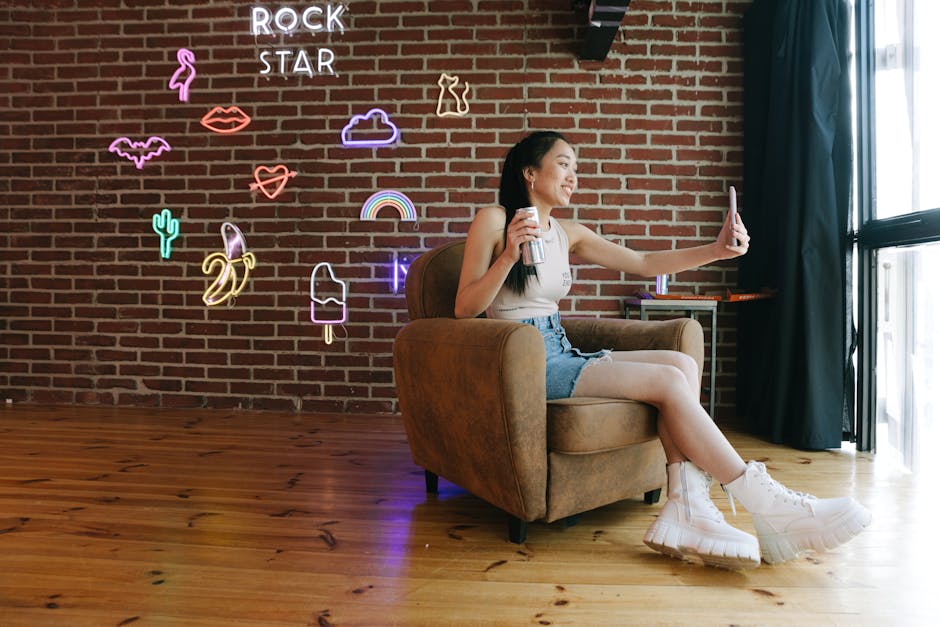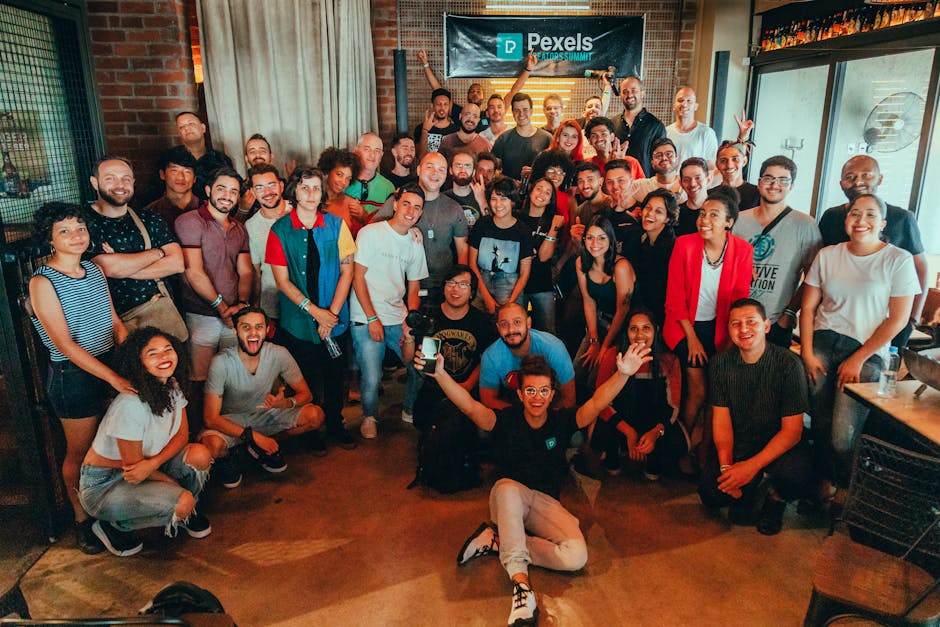The creator economy is undergoing a profound transformation, shifting from a landscape dominated by static digital products to one defined by dynamic, AI-powered digital experiences. This evolution is not merely incremental; it represents a fundamental paradigm shift in how creators engage with their audiences, monetize their content, and build sustainable careers. The integration of advanced AI technology is at the heart of this change, enabling unprecedented levels of personalization, automation, and interactivity.
This comprehensive guide will delve into the intricacies of this evolution, exploring the market dynamics, the pivotal role of AI in digital products, and the emerging strategies that are redefining content monetization and audience engagement. We will examine how creators are leveraging AI technology trends to foster deeper connections, create immersive digital experiences, and unlock new revenue streams, ultimately shaping the future of online learning and community building.
Understanding the Modern Creator Economy Landscape
The creator economy has exploded into a formidable global force, far surpassing initial projections. Valued between an impressive $191 billion and $250 billion in 2024–2025, its rapid expansion signals a new era of digital entrepreneurship. This sector is not just growing; it’s accelerating at a compound annual growth rate (CAGR) of 23% to 26%, with forecasts predicting it could reach an astonishing $480–$500 billion by 2027, and potentially $528.39 billion by 2030. This robust growth underscores the increasing viability and appeal of creator-led businesses.
The sheer scale of this ecosystem is remarkable, with 207 million content creators worldwide. While North America currently leads as the largest market, the Asia Pacific region is rapidly emerging as the fastest-growing segment, reflecting a global embrace of creator-driven content. A significant portion of the market’s revenue, nearly 60%, is generated by individual creators, highlighting the power of solo entrepreneurs and small teams. This shift signifies a move away from traditional media gatekeepers towards a more democratized content landscape.
Monetization within this economy is becoming increasingly sophisticated. Over 50% of creators are actively monetized, and a substantial 45%–47% are full-time creators. This professionalization of content creation indicates that for many, it’s no longer a hobby but a sustainable career path. The growth in international subscription revenue for creators, which surged by 60% in the past year, further illustrates the effectiveness of direct-to-fan models.
The creator economy’s vitality is also evident in its diverse revenue streams. Beyond direct subscriptions, influencer marketing continues to be a powerful force, with brands projected to spend $7 billion on influencer marketing in 2024, marking a 17% year-over-year increase. This robust investment reflects the undeniable impact creators have on consumer behavior and brand perception. The average earnings for content creators, while skewed by top earners, stand at $59 per hour, showcasing the significant financial potential within this dynamic sector.

AI Technology: The Catalyst for Dynamic Digital Experiences
The integration of AI technology is fundamentally reshaping the creator economy, moving it beyond static digital products to truly dynamic and interactive digital experiences. Creators are increasingly leveraging AI tools for a multitude of purposes, from content generation and personalization to advanced analytics and automation. This strategic adoption of AI technology solutions is not just about efficiency; it’s about enhancing creativity and delivering unparalleled value to audiences.
The 2025 Epidemic Sound Report highlights the significant increase in AI adoption as a key trend. Creators are utilizing AI to streamline tedious tasks, allowing them to focus more on creative ideation and strategic planning. This includes AI-powered video editing, automated captioning, and even generating initial drafts of scripts or marketing copy. The ability of Generative AI to assist in content creation, concepting, and production management is proving to be a game-changer, as noted by experts.
What are the key ways AI enhances creator capabilities?
- Content Creation & Enhancement: AI assists in generating ideas, drafting content, editing videos, and even creating synthetic media like virtual influencers, as seen with TikTok’s business tools.
- Personalization & Engagement: AI algorithms analyze audience data to recommend content, personalize user experiences, and even enable creators to interact with followers through AI versions of themselves, a concept Meta is exploring with its “AI Studio” for Instagram.
- Automation & Efficiency: AI automates repetitive tasks such as scheduling, social media management, and data analysis, freeing up creators’ time for higher-value activities.
- Monetization & Discovery: AI connects creators with relevant brands for collaborations, optimizes ad placements, and helps identify new monetization opportunities by understanding audience preferences.
The shift towards dynamic digital experiences is also fueled by AI’s capacity for personalization. By analyzing audience data, AI algorithms can help creators tailor content, recommendations, and even interactive elements to individual preferences. This fosters stronger audience connections and enhances engagement, moving beyond a one-size-fits-all approach. For instance, AI provides deeper analytics, enabling creators to refine their strategies for better engagement, as highlighted by Social Native’s insights. This level of data-driven insight was previously inaccessible to most individual creators, but AI technology best practices are making it commonplace.
Evolving Monetization Strategies in the AI Era
The advent of AI technology has profoundly reshaped how creators monetize their work, moving beyond traditional ad revenue and static product sales to more dynamic and diversified models. The creator economy is witnessing a significant pivot towards direct-to-fan monetization, with an impressive 95% of creators adopting these models. This shift empowers creators to build more resilient and predictable income streams, reducing reliance on platform algorithms or volatile ad markets.
This evolution is characterized by a move from one-off transactions to ongoing, value-driven relationships with audiences. Creators are exploring a rich tapestry of monetization avenues, including subscription services, exclusive content, paid challenges, and online communities. These models foster a sense of belonging and provide consistent value, encouraging long-term engagement. The growth in international subscription revenue for creators, which increased by 60% in the past year, is a clear indicator of the success of these direct-to-fan approaches.
How are creators diversifying revenue streams with AI?
- Subscription Models: Offering exclusive content, early access, or ad-free experiences through platforms like Patreon or Substack, often enhanced by AI for content recommendations.
- Paid Challenges & Workshops: Creating structured learning experiences or interactive programs, as exemplified by Social Creators, which leverages AI for participant management and content delivery.
- Community Platforms: Building exclusive online communities where members pay for access to discussions, networking, and direct interaction with the creator, often moderated and personalized by AI agents.
- Influencer Marketing & Brand Deals: Leveraging AI to identify relevant brands, optimize campaign performance, and negotiate better deals, with brands projected to spend $7 billion on influencer marketing in 2024.
- Digital Products & Services: While static products are evolving, AI helps creators personalize and dynamically update offerings like e-books, templates, or software, making them more engaging.
The impact of AI technology extends to optimizing existing monetization channels. For instance, AI can analyze audience demographics and engagement patterns to help creators identify the most lucrative brand partnerships or optimize their content for higher ad revenue. It also facilitates the creation of personalized product recommendations within e-commerce ventures, boosting conversion rates. This strategic use of AI technology strategies ensures creators are not just earning, but earning smarter and more sustainably.

The Rise of Experiential Marketing and Community
In an increasingly digital world, there’s a growing demand for authentic, in-person connections. This sentiment is driving the rise of experiential marketing within the creator economy, where creators are moving beyond purely online interactions to foster real-world communities and memorable experiences. As Andrew Roth, Founder and CEO of dcdx, aptly puts it, “Trend and scrolling fatigue combined with what we call digital captivity have led young people to relearn how to connect. Creating their own spaces, taking their online interests offline.” This highlights a critical shift towards human-centric engagement.
Creators are now leveraging their online influence to organize events, workshops, meet-ups, and even retreats. These experiential offerings provide unique opportunities for deeper audience engagement, fostering stronger loyalty and a sense of belonging that digital interactions alone cannot fully replicate. Companies like Social Creators are at the forefront of this trend, empowering creators to sell high-ticket experiences like group coaching and workshops, capitalizing on the demand for meaningful, interactive engagements.
Why is experiential marketing crucial for creators?
- Deeper Connection: In-person events create stronger bonds between creators and their audience, fostering a loyal community that feels invested.
- Enhanced Monetization: Experiential offerings, such as exclusive workshops or retreats, often command higher price points than digital products, providing significant revenue streams.
- Brand Differentiation: Offering unique experiences helps creators stand out in a crowded digital landscape, attracting a dedicated following.
- Community Building: These events facilitate networking among audience members, transforming passive followers into an active, engaged community.
- Feedback Loop: Direct interaction provides invaluable qualitative feedback, helping creators understand their audience’s needs and preferences more intimately.
The integration of AI technology plays a supporting role in this shift, even for offline experiences. AI can assist in event planning by analyzing audience demographics to determine optimal locations and timing, personalize invitations, and even manage registrations and post-event follow-ups. For instance, AI-driven analytics can help creators identify which segments of their audience are most likely to attend specific types of events, optimizing marketing efforts. This blend of digital intelligence and real-world interaction represents the pinnacle of modern creator engagement, creating truly dynamic digital experiences that extend beyond the screen.
Generative AI’s Role in Content Creation and Personalization
Generative AI technology is rapidly transforming the core processes of content creation and personalization within the creator economy. This advanced form of AI technology is not just automating tasks; it’s empowering creators to produce content at scale, explore new creative avenues, and deliver hyper-personalized experiences that were previously unimaginable. The ability of Generative AI to create text, images, audio, and even video from simple prompts is a game-changer for digital products and services.
Creators are leveraging Generative AI to overcome creative blocks, accelerate production workflows, and experiment with diverse content formats. This includes using AI to generate script outlines, design social media graphics, compose background music, or even create entire virtual environments. The efficiency gains are substantial, allowing creators to focus their human creativity on refinement, strategic direction, and audience interaction. As experts note, brands and creators are increasingly utilizing Generative AI for content creation, concepting, and production management.
What are the practical applications of Generative AI for creators?
- Automated Content Generation: Producing blog posts, social media captions, video scripts, and email newsletters with AI assistance, significantly reducing writing time.
- Visual & Audio Asset Creation: Generating unique images, illustrations, logos, and even custom soundtracks or voiceovers, enhancing the aesthetic and auditory quality of content.
- Personalized Content Delivery: Dynamically adapting content elements (e.g., ad creatives, email subject lines, video intros) based on individual user data for maximum engagement.
- Virtual Influencers & Avatars: Creating AI-powered virtual personalities, as seen with TikTok’s allowance for businesses to create their own virtual influencers, enabling scalable brand representation and interaction.
- Interactive Experiences: Developing AI-driven chatbots or interactive stories that respond to user input, creating immersive and engaging digital experiences.
Beyond creation, Generative AI excels at personalization. By analyzing vast datasets of user behavior, preferences, and engagement patterns, AI can dynamically tailor content to individual audience members. This could mean generating personalized video recommendations, crafting unique email campaigns, or even creating custom learning paths within online learning platforms. Meta’s development of an “AI Studio” to enable Instagram creators to interact with followers through AI versions of themselves is a prime example of this advanced personalization in action. This level of customization fosters deeper connections and significantly boosts audience retention and monetization potential, solidifying AI technology as an indispensable tool for the modern creator.

Navigating Challenges and Seizing Opportunities with AI
While the evolution of the creator economy, powered by AI technology, presents unprecedented opportunities, it also introduces a new set of challenges that creators must strategically navigate. The rapid pace of technological change, coupled with the inherent pressures of content creation, can lead to significant hurdles. However, by understanding these challenges, creators can proactively implement AI technology best practices to mitigate risks and maximize their potential.
One of the most pressing concerns for creators is burnout and platform volatility. The constant demand for fresh, engaging content, combined with the unpredictable nature of algorithm changes, can be exhausting. The 2025 Epidemic Sound Report explicitly highlights burnout as a significant challenge. Additionally, the ecosystem remains fragmented, with money flowing through diverse channels, making it complex for creators to manage multiple revenue streams and audience touchpoints effectively.
What are the main challenges and how can AI help?
- Burnout: AI can automate repetitive tasks (scheduling, basic editing, content ideation), freeing up creators’ time and mental energy, thus reducing the risk of burnout.
- Platform Volatility: Diversifying content across platforms and revenue streams, guided by AI-driven analytics, can reduce dependence on any single platform.
- Content Saturation: AI helps create highly personalized and unique content at scale, allowing creators to stand out in a crowded market.
- Monetization Complexity: AI tools can help track earnings across various platforms, identify optimal monetization strategies, and even manage invoicing and payments.
- Maintaining Authenticity: While AI aids creation, creators must ensure their unique voice and perspective remain central, using AI as an assistant rather than a replacement.
Despite these challenges, the opportunities presented by AI technology are immense. The ability to personalize content, automate workflows, and gain deeper audience insights empowers creators to build more resilient and engaging businesses. For example, AI provides deeper analytics, enabling creators to tailor content and strategies for better engagement. This data-driven approach allows creators to make informed decisions, optimize their content for specific audiences, and identify emerging trends before they become mainstream. The professionalization of the space, with 45%–47% of creators now full-time, underscores the growing stability and potential for long-term success in this dynamic environment.
Implementing AI Technology for Creator Success
For creators looking to thrive in this evolving landscape, strategically implementing AI technology is no longer optional—it’s imperative. The key lies in adopting AI technology best practices that enhance, rather than replace, human creativity and connection. This section provides actionable guidance on how creators can effectively integrate AI into their workflows to create dynamic digital experiences and optimize their monetization strategies.
The first step is to identify areas where AI can provide the most significant impact. This often involves automating repetitive or time-consuming tasks, allowing creators to reallocate their energy towards creative ideation, strategic planning, and direct audience engagement. Embracing AI as a tool to enhance creativity, rather than a replacement, is a core principle for success, as emphasized by expert advice. This mindset shift is crucial for leveraging AI’s full potential without compromising authenticity.
How to effectively integrate AI into your creator workflow:
- Start Small with Automation: Begin by using AI for simple tasks like email scheduling, social media post generation, or basic content editing. Tools like Grammarly for writing or AI-powered caption generators are excellent starting points.
- Leverage AI for Content Ideation: Use Generative AI platforms to brainstorm topics, generate outlines, or even draft initial versions of scripts or blog posts. This can significantly speed up the content creation process.
- Enhance Personalization with AI Analytics: Implement AI-driven analytics tools to understand audience preferences, engagement patterns, and demographic data. Use these insights to tailor content, recommendations, and marketing messages for individual users.
- Explore AI-Powered Editing & Production: Utilize AI tools for video editing, audio enhancement, image generation, and even creating virtual backgrounds. This can elevate production quality and reduce post-production time.
- Diversify Monetization with AI: Use AI to identify new brand partnership opportunities, optimize ad placements, and personalize product recommendations within your digital storefronts or subscription offerings.
Furthermore, creators should focus on diversifying their revenue streams, a strategy that AI can significantly support. By exploring multiple income sources—such as sponsored content, platform payouts, affiliate marketing, merchandise, and subscriptions—creators can build a more stable and resilient business. AI can help in this diversification by identifying optimal channels, predicting audience interest in new product lines, and even managing the logistics of various monetization models. This proactive approach ensures creators are well-positioned to capitalize on the evolving creator economy, transforming static digital products into dynamic, AI-powered experiences that resonate deeply with their audience.
The Future of the Creator Economy: AI Agents and Beyond
The trajectory of the creator economy, deeply intertwined with the advancements in AI technology, points towards a future characterized by hyper-personalization, advanced automation, and the emergence of sophisticated AI agents. This next phase of evolution will see creators not just using AI as a tool, but collaborating with AI as an integral part of their creative and business operations. The shift from static digital products to dynamic, AI-powered digital experiences is merely the beginning of a much larger digital transformation.
One of the most compelling aspects of this future is the potential for AI agents to act as extensions of creators themselves. Imagine AI agents managing audience interactions, personalizing content delivery for millions, or even generating bespoke content variations based on individual user preferences. Meta’s exploration of an “AI Studio” for Instagram creators to interact with followers through AI versions of themselves offers a glimpse into this reality. These AI versions could maintain a creator’s unique voice and style, providing round-the-clock engagement and support.
What will define the future of the creator economy?
- Hyper-Personalized Experiences: AI will enable creators to deliver content and interactions tailored to an individual’s mood, learning style, and real-time needs, making every digital experience unique.
- Autonomous Content Generation: Advanced Generative AI will create entire campaigns, from concept to execution, with minimal human oversight, freeing creators for high-level strategy and creative direction.
- AI-Powered Monetization Ecosystems: AI agents will intelligently identify and pursue new monetization opportunities, manage complex subscription tiers, and optimize revenue streams across diverse platforms.
- Seamless Blending of Digital & Physical: AI will enhance experiential marketing by personalizing physical events, managing logistics, and integrating digital content into real-world interactions.
- Ethical AI & Creator Responsibility: As AI becomes more powerful, creators will face increasing responsibility to use these tools ethically, ensuring transparency and fairness in their AI-driven content and interactions.
The role of AI technology will also extend to creating more immersive and adaptive online learning environments. AI-powered platforms could dynamically adjust curricula based on a learner’s progress, provide instant feedback, and even simulate real-world scenarios for practical application. This level of adaptive learning will redefine digital experiences, making education more engaging and effective. The future creator economy will be a dynamic ecosystem where human creativity is amplified by intelligent AI technology solutions, pushing the boundaries of what’s possible in content creation and audience engagement.
Frequently Asked Questions (FAQ)
How do I start integrating AI into my content creation process?
Start by identifying repetitive tasks like drafting social media posts or generating video captions. Use readily available AI tools for these specific functions to streamline your workflow and gradually explore more advanced applications.
- Identify Pain Points: Pinpoint areas where you spend significant time on repetitive or low-creative tasks.
- Explore Entry-Level Tools: Begin with AI writing assistants, image upscalers, or basic video editing AI.
- Experiment & Learn: Don’t be afraid to try different tools and see what works best for your specific content niche.
What are the main benefits of using AI in digital products for creators?
AI in digital products offers creators enhanced personalization, automation of tedious tasks, deeper audience insights, and the ability to scale content creation efficiently. This leads to more engaging experiences and diversified monetization.
- Increased Efficiency: Automate tasks like content scheduling, data analysis, and initial content drafts.
- Better Personalization: Deliver tailored content and recommendations to individual audience members, fostering stronger connections.
- Deeper Insights: Gain advanced analytics on audience behavior and preferences to inform content strategy.
- Scalability: Produce more content and manage larger audiences without proportional increases in effort.
Why should creators focus on dynamic, AI-powered digital experiences?
Focusing on dynamic, AI-powered digital experiences is crucial because it meets audience demand for personalized, interactive content, drives higher engagement, and unlocks new, resilient monetization opportunities beyond static offerings.
- Audience Expectation: Modern audiences expect personalized and interactive content that adapts to their needs.
- Enhanced Engagement: Dynamic experiences keep audiences more invested and coming back for more.
- Competitive Advantage: Differentiating your offerings with AI-driven interactivity sets you apart in a crowded market.
- New Revenue Streams: AI facilitates advanced subscription models, personalized product recommendations, and unique experiential offerings.
When to use Generative AI versus traditional content creation methods?
Use Generative AI for brainstorming, drafting initial content, creating diverse variations, or generating assets quickly, especially when speed and scale are priorities. Reserve traditional methods for nuanced storytelling, deep emotional connection, or highly specialized, unique creative work that requires a distinct human touch.
What are some examples of AI agents in the creator economy?
AI agents can range from virtual influencers created by businesses like TikTok to AI-powered chatbots that interact with followers, or even AI versions of creators themselves, as Meta is developing for Instagram, providing scalable and personalized engagement.
How does AI help with content monetization?
AI assists in monetization by providing deeper audience analytics to identify lucrative niches, optimizing ad placements, facilitating targeted brand partnerships, and enabling personalized product recommendations within e-commerce or subscription models, leading to more efficient revenue generation.
Is AI a threat to creators or an opportunity?
AI is primarily an immense opportunity for creators. While some areas may be disrupted, as Ari Paparo of Marketecture Media notes, AI empowers creators to enhance creativity, automate tasks, personalize experiences, and scale their reach, ultimately strengthening their position in the economy.
What is the role of experiential marketing in the AI-driven creator economy?
Experiential marketing, such as in-person events and workshops, provides a crucial counterbalance to digital interactions. It fosters deeper community bonds and offers unique monetization avenues, often supported by AI for logistics and personalization, as highlighted by Andrew Roth’s insights.
How can creators ensure authenticity when using AI technology?
Creators ensure authenticity by using AI as a tool to amplify their unique voice and vision, rather than letting it dictate their content. Focus on AI for efficiency and personalization, but always maintain human oversight and infuse your distinct creative touch and values into the final output.
What are the projected growth figures for the creator economy with AI integration?
The creator economy is projected to grow from its current $191–$250 billion valuation to potentially $480–$500 billion by 2027 and $528.39 billion by 2030, driven significantly by the integration of AI technology trends and dynamic digital experiences.
How does AI impact online learning within the creator economy?
AI revolutionizes online learning by enabling personalized learning paths, adaptive content delivery, automated feedback, and interactive simulations. This creates more engaging and effective educational experiences, moving beyond static course materials to dynamic, responsive learning environments.
What is the significance of direct-to-fan monetization models?
Direct-to-fan models are critical for creator sustainability, reducing reliance on platform algorithms and ad revenue. With 95% of creators adopting them, these models foster stronger community, offer more predictable income through subscriptions and exclusive content, and empower creators with greater control over their business.
How can creators stay competitive amidst rapid AI advancements?
To stay competitive, creators must continuously learn and adapt to new AI technology trends, embrace AI as an enhancement to their creativity, diversify revenue streams, and prioritize building strong, engaged communities through both digital and experiential offerings. Proactive adoption and strategic integration are key.
Conclusion
The creator economy is undeniably in the midst of a transformative period, evolving rapidly from a landscape of static digital products to one rich with dynamic, AI-powered digital experiences. This shift is not merely a technological upgrade but a fundamental redefinition of how creators connect, engage, and monetize. The pervasive influence of AI technology is the driving force behind this evolution, enabling unprecedented levels of personalization, automation, and interactive content delivery.
As we’ve explored, the market is experiencing explosive growth, with projections indicating a multi-hundred-billion-dollar valuation in the coming years. Creators are leveraging AI technology trends to diversify their monetization strategies, moving towards resilient direct-to-fan models and embracing experiential marketing. While challenges like burnout and platform volatility persist, the strategic adoption of AI technology solutions offers powerful tools to overcome these hurdles and unlock new opportunities. The future promises an even more integrated role for AI agents, pushing the boundaries of creativity and engagement, and solidifying the creator economy as a cornerstone of the digital landscape. For creators, embracing this AI-driven evolution is not just about staying relevant; it’s about pioneering the next generation of digital experiences.
Published October 28, 2025








